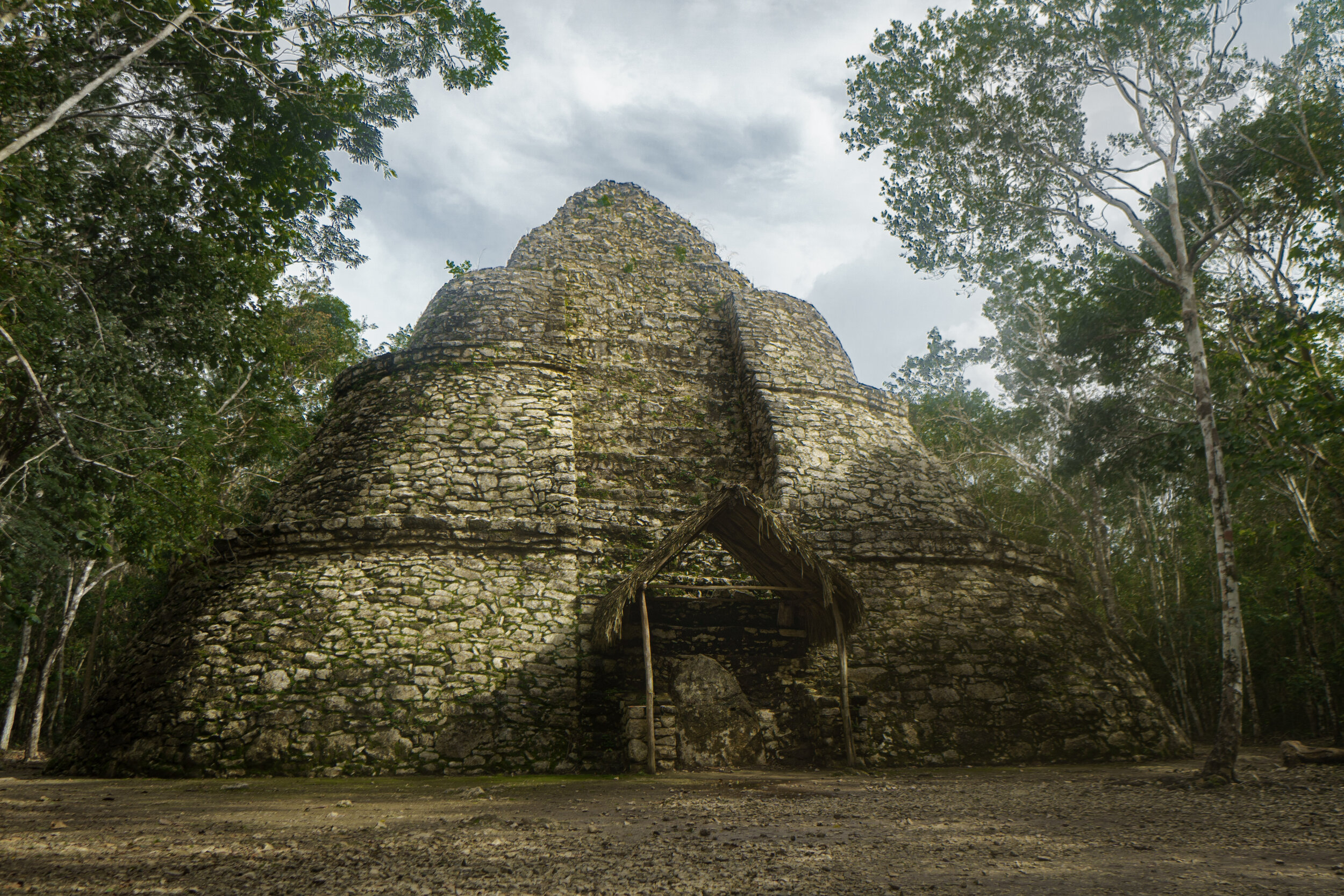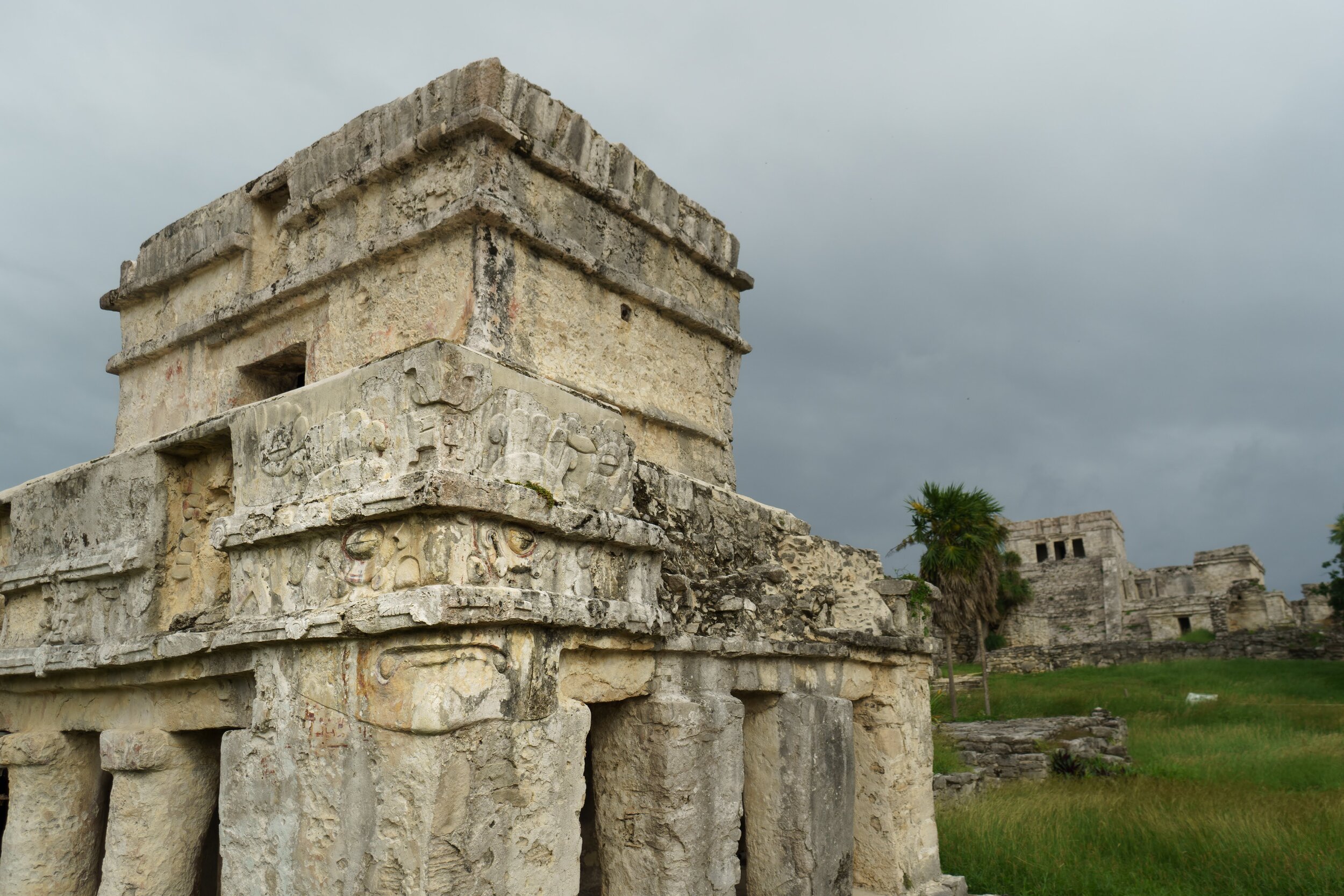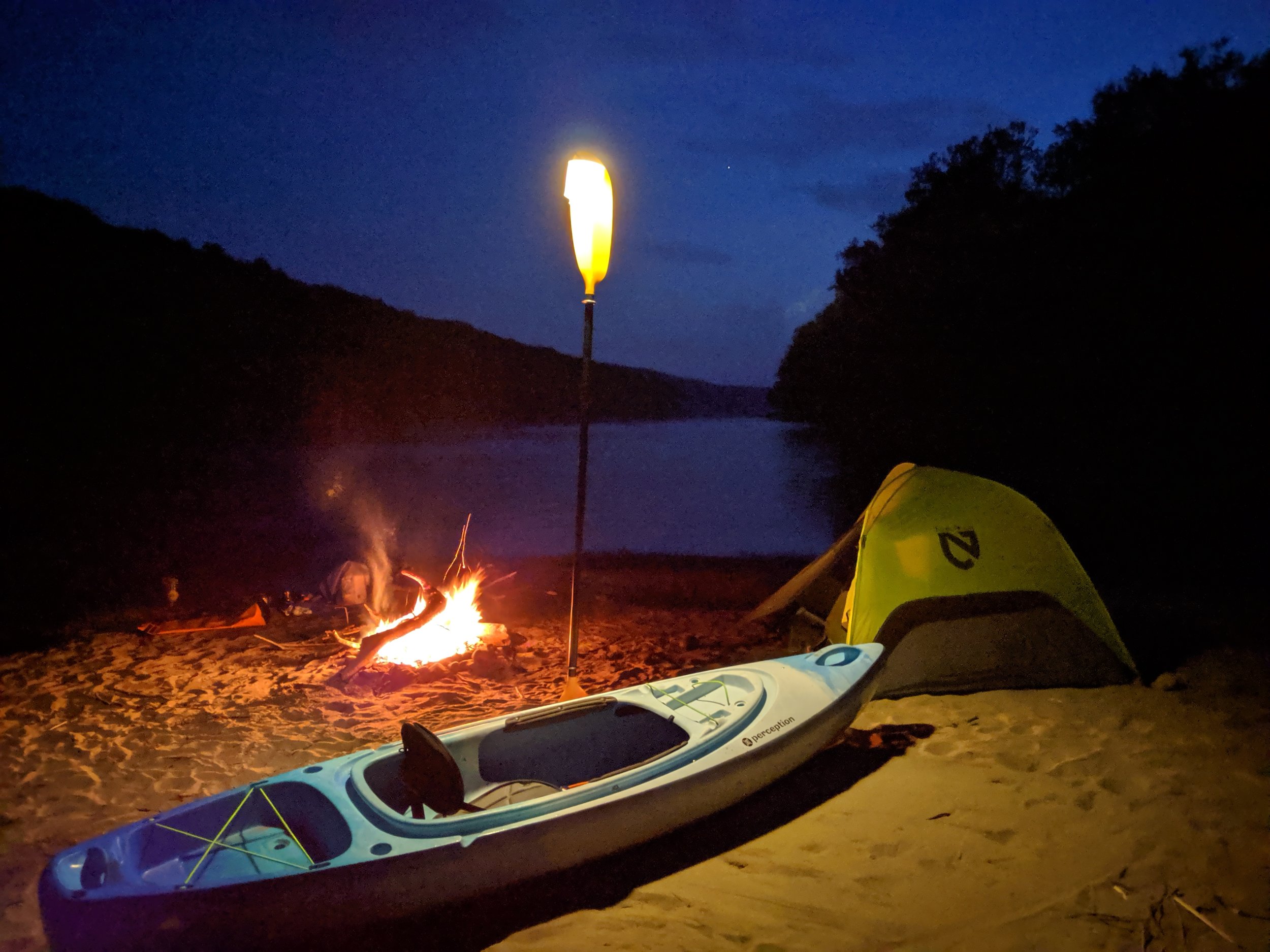Exploring Ancient Mayan Ruins in the Yucatan Jungle

I was accompanied by the renowned environmental/wetland scientist Ariana Tsiattalos on this adventure for a combined archeological/environmental science expedition to explore ancient Mayan ruins deep within the Yucatan Jungle.
We stayed in an off-the grid compound in the high jungle called Ecoluum, about 18km inland from the coast.
The only power and connection to the outside world came from solar panels perched high atop this Ewok tower, barely peeking out of the canopy.
North-West of the Ecoluum compound we found the ancient Mayan city of Coba.
First settled roughly nineteen hundred years ago, within a century the Coba came to dominate the Yucatan Peninsula politically.
Over time Coba became the nexus of the Mayan Empire with the largest network of stone causeways (Sacbe) in the ancient Mayan world. By 600 CE, the emergence of the powerful city states of Puuc and Chichén Itzá began to erode away at Coba's dominance. By the time of the Spanish Conquest in 1550, the city would be completely abandoned.
One of the things linking the Mayan city states together culturally was their competitive Mesoamerican ballgame. The ball court itself was a focal point of Maya cities and symbolized the city's wealth and power.
They city of Coba was expansive and it took us a good four hours to explore on foot. Renting a bike was an option, but we decided we wanted to take our time taking in all the flora and fauna of the Jungle landscape.
Deep within the city we found the structure known as Xaibé, an astronomical observatory for the Mayan people. It's semi-rounded corners make it unique among the Mayan pyramids. According to some archeologists, it's four segments represent the four seasons of the year and it's 20 extremely steep 'steps' represent the days of a month on the Mayan calendar.
These engraved and sculpted stone pillars, called stelae, can be found throughout the area. They document ceremonial life and important events of the Late Classical Period (600-900 CE) of Mesoamerican civilization.
The most famous part of Coba by far is the Nohoch Mul pyramid. It is the biggest structure in Coba, and one of the tallest Mayan pyramids on the Yucatan Peninsula.
The peninsula is geographically flat and covered in dense jungle, making the top of Nohoch Mul one of the few places in the empire the Mayan people were able to get a peek above the jungle canopy and see for miles.
After exploring every inch of Coba, we retreated back to our jungle hut and prepared for the next day’s outing.
This time, our journeys took us towards the coast down to the Sian Ka’an Biosphere Reserve, south of the city of Tulum.
From here we chartered a small boat to take us through the ancient hand-dug canal linking the Muyil and Chunyaxché Lagoons.
After a bit of exploring we came across a small structure believed to have been a type of Mayan customs house for trade coming into the lagoon area.
After arriving back at the docks, we continued our exploration northward.
The modern town of Tulum is known to be a resort area for those seeking tropical sun along the beach. But our interests lied just north of there to the ancient Mayan port city of the same name.
The walled city of Tulum was one of the last cities built and inhabited by the Maya.
Meaning 'wall' in Maya, it served as a trading port and gateway that connected the Maya civilization to others in the Caribbean and Gulf.
Due in part to it's fortress-like nature, it managed to survive about 70 years after the Spanish began occupying the peninsula in the 1500s.
Dotted with elaborate temples and palaces, the area catered to the more well-to-do of Maya society.
It’s dual role as the face of the empire to outsiders, and as an economic trading hub gave Tulum a unique stately feel when compared to the other areas we explored on this trip.
Our expedition would be short lived this time, only lasting a few days. And I sincerely hoped I would able to plan another one soon as there was much much more of the Mayan civilization to explore.





























